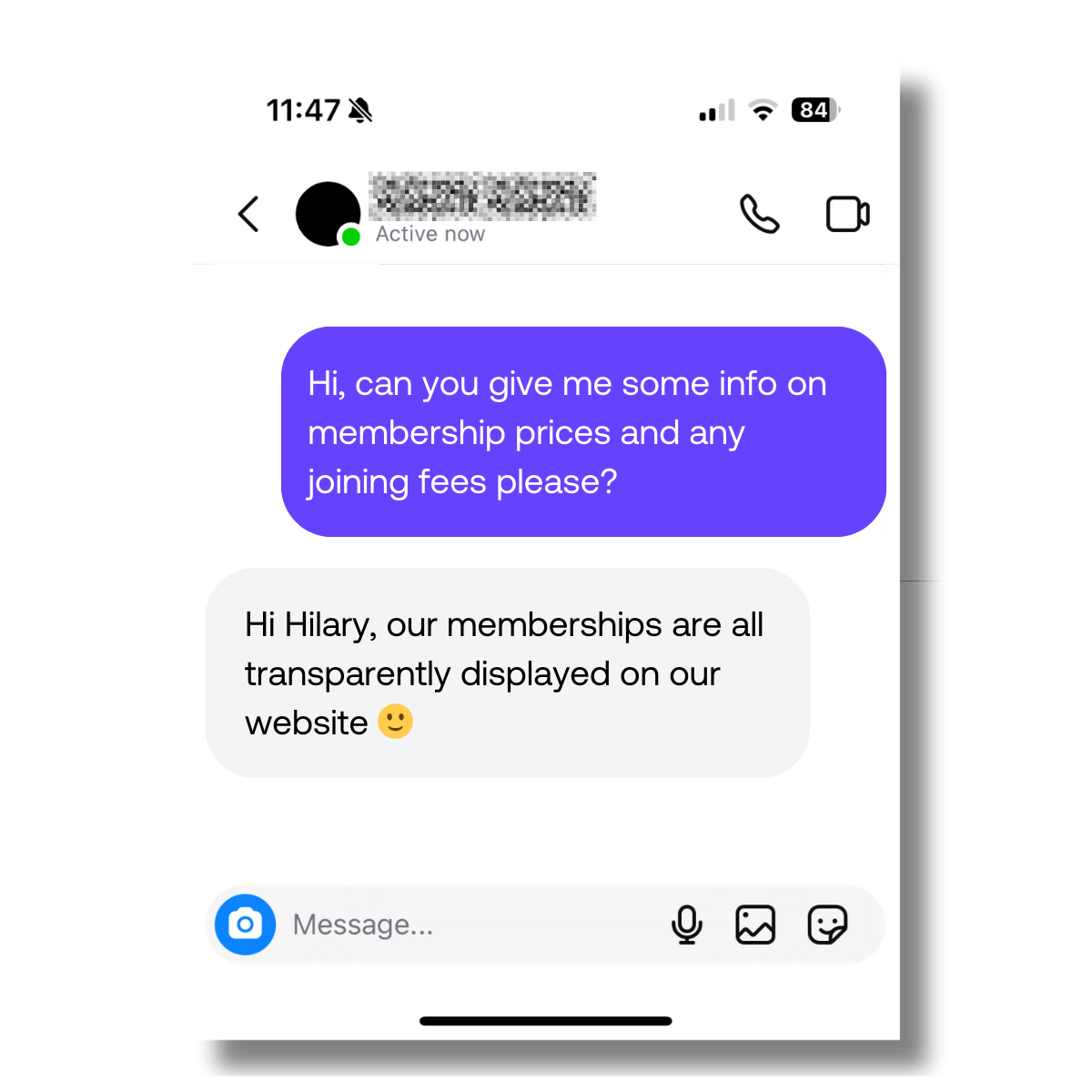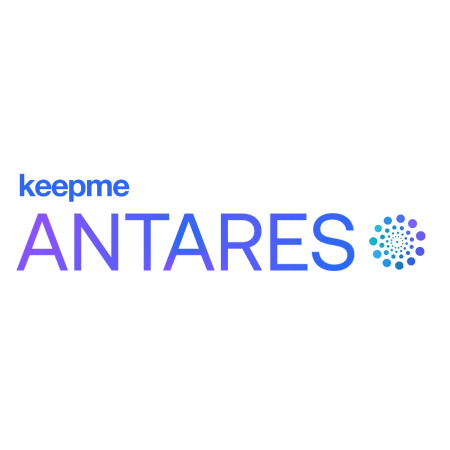Australia Fitness Industry ‘Time to Reply’ Study: A Wake-Up Call for Fitness Operators


The Importance of Speed & Quality Responses in Gym Member Acquisition
In today’s digital age, where instant digital gratification is the norm, potential gym members expect timely and high-quality responses to their inquiries. Our study, which sent 202 emails and 338 social media membership inquiries to various Australian fitness operators, has unveiled some alarming trends that suggest many fitness centers are falling short in this regard.
Australia 'Time To Reply' Study Key Findings:
• Certainty of Reply: Across all channels, a significant number of inquiries were left unanswered. Facebook inquiries had the worst response rate, with 33% going completely unanswered. Even email, which performed the best, still saw 18% of inquiries ignored.
• Speed to Reply: The average response time across all channels was far from ideal. Email inquiries took an average of 7.5 hours to receive a response, while Facebook and Instagram inquiries fared even worse, with response times of 19 hours and 31 hours, respectively.
• Quality of Response: Of the responses that were received, many failed to adequately address the inquiry or lacked a clear call to action. Over 28% of email responses did not answer the question asked, and only 19% of replies across social media channels suggested a tour, trial, or visit.
Why Quick and Quality Responses Matter
The impact of these findings cannot be overstated. Studies show that leads responded to within 5 minutes are 100 times more likely to connect and 21 times more likely to convert into genuine opportunities. This “golden window” of opportunity is crucial for fitness centers to capitalize on potential leads and turn them into paying members.
Unfortunately, our study reveals that Australian fitness centers are missing this window by a wide margin. Even the best-performing segment - email - still averaged a response time of 450 minutes, far exceeding the optimal 5-minute window. This delay in response not only reduces the likelihood of converting a lead but also increases the overall cost of acquiring new members.
Segment-Specific Performance
Our study segmented the responses from different types of fitness operators, including Multi-Site Independents, Public Leisure Authorities, Franchise/Corporate Chains, and Independent Health Clubs/Gyms. While there were variations in performance across these segments, the overall picture remains a concern:
• Australian Multi-Site Independents: While email responses were relatively quick (averaging 271 minutes), social media response times were much slower, with Instagram responses taking an average of 2,562 minutes.
• Australian Public Leisure Authorities: This segment had the lowest email response rate, with 30% of inquiries going unanswered, and an average response time of 468 minutes.
• Australian Franchise/Corporate Chains: Despite having a higher response rate, their average response times were some of the worst, particularly on Instagram, where responses took an average of 1,902 minutes.
• Australian Independent Health Clubs/Gyms: Although they performed better than other segments in terms of response rates, their response times still fell short of the 5-minute window. This was across all channels with none of their Instagram replies and the smallest percentages of Facebook and email replies recorded in the study landing within 5 minutes (4.17% and 3.7% respectively).
The Cost of Member Inquiry Response Delays
The delays in response times have a direct impact on the cost per lead (CPL) and cost per acquisition (CPA) for fitness centers. By not responding quickly or effectively, fitness centers are essentially throwing money away.
Reducing Cost Per Lead (CPL) and Cost Per Acquisition (CPA) for Greater Profitability
Streamlining the member acquisition process, from generating high-quality leads to ensuring they follow through on attending tours, can play a critical role in lowering your Cost Per Lead (CPL) and Cost Per Acquisition (CPA). When fitness marketing and sales strategies are fine-tuned to attract, engage, and convert the right prospects efficiently, the overall expense of acquiring new members decreases. This not only enhances the impact of your current spending but also minimizes the resources and ad spend needed to sustain or even grow your club's membership base.
Reducing CPL and CPA has a direct, positive effect on your gym’s profitability. Lower acquisition costs increase the margin between the revenue earned from memberships and the cost associated with acquiring those members, leading to improved profit margins.
By focusing on high-quality leads, maintaining strong engagement throughout the prospect journey, and ensuring high conversion rates, acquiring new members becomes a highly profitable venture, contributing to the long-term success of your fitness business.
Here’s how:
1. Targeting High-Quality Leads: Concentrating on leads that are more likely to convert reduces wasted spending on those less likely to become members. This naturally lowers your CPL by making your marketing budget more efficient.
2. Effective Engagement: By effectively engaging leads throughout their journey, you increase the likelihood that they will move toward membership. This boosts your conversion rate, directly reducing your CPA. The more leads you convert without increasing spend, the lower your CPA will be.
3. Optimized Resource Allocation: Streamlining these processes allows you to make better use of resources, whether it’s your marketing budget, your sales team’s time, or your CRM tools. This optimization decreases the need for excessive ad spend or additional resources to achieve growth targets.
4. Increased Profit Margins: Lowering CPL and CPA directly enhances profitability by widening the gap between the revenue generated per new member and the cost of acquiring them. With effective membership pricing and retention strategies in place, reduced acquisition costs lead to higher profit margins
The Impact of Poor-Quality Responses on Member Acquisition for Fitness Operators
Where member acquisition is a top priority, the quality of responses to inquiries can make or break your club's sales efforts. Our study revealed some concerning statistics: over 28% of email responses failed to answer the questions asked (that being a basic request for membership information and pricing) and this figure jumped to 37% for social media replies. Even more troubling, only 31% of those who actually answered the question via social media mentioned booking a facility tour, trial, or visit - key steps in converting leads into members.
 Above is an example of a poor-quality response we received.
Above is an example of a poor-quality response we received.
The findings highlight a significant problem: poor-quality responses are undermining the effectiveness of member acquisition strategies. In an industry where first impressions count, a slow, irrelevant, or poorly structured reply can easily turn a potential member away.
"Fitness operators need to recognize that every interaction with a prospect is an opportunity to impress, engage, and ultimately convert. If you aren't prioritizing that, you're actively telling your prospects you can't or don't want to deal with them until they pay to join. That's far from the ideal experience in a highly competitive industry."

Here’s why this issue is particularly problematic for fitness businesses:
1. Missed Opportunities for Engagement: When responses fail to directly address a prospect’s inquiry or neglect to suggest a tour or trial, the opportunity to engage and build a relationship is lost. This not only reduces the likelihood of converting that lead into a member but also reflects poorly on the brand, suggesting a lack of attention to detail and customer care.
2. Damaging First Impressions: The response a potential member receives is often their first direct interaction with your facility. A poor-quality reply, whether it’s incomplete, vague, or lacking a clear call to action, can leave a negative impression, reducing the chances that the prospect will pursue membership further.
3. Wasted Marketing Efforts: Consider the resources invested in generating leads, whether through digital advertising, social media, or other channels. All that effort (and expense) is wasted if the responses those leads receive are subpar. It’s like throwing money away when the final step in the acquisition funnel is not handled with the same care and precision as the initial lead generation efforts.
4. Lower Conversion Rates: The study also showed that out of all the social media responses, only 19.1% effectively answered the prospect’s question and suggested an action-oriented next step, such as booking a tour. This means that the majority of potential conversions are slipping through the cracks due to inadequate follow-up.
The Way Forward: Embracing Technology for Better Engagement
Given the significant gaps in response times and quality, it’s clear that Australian fitness operators need to rethink their approach to lead generation and management. One solution lies in the adoption of AI-powered sales agents, such as Keepme Antares' AI Sales Agents, which can provide immediate, high-quality responses across multiple channels, ensuring no inquiry goes unanswered.
Key Benefits of AI Sales Agents:
• 24/7 Availability: AI agents are always on, ensuring that inquiries are responded to immediately, no matter the time of day.
• Consistency and Quality: AI can deliver consistent, high-quality responses that are personalized and tailored to turn leads into tour attendees and then members.
• Efficiency: By handling multiple inquiries simultaneously, in any language, AI can reduce the burden on human staff, allowing them to focus on more complex tasks.
The findings of our ‘Time to Reply’ study serve as a wake-up call for the Australian fitness industry. To remain competitive and profitable, fitness centers must prioritize both the speed and quality of their responses to inquiries. By optimizing these critical aspects of member acquisition, fitness centers can lower their CPL and CPA, ultimately driving growth and success in an increasingly competitive market.
As we move forward, embracing technology and refining communication strategies will be key to ensuring that no potential member falls through the cracks. With the right tools and approach, Australian fitness operators can turn every inquiry into an opportunity, boosting their bottom line and setting themselves apart in the crowded fitness landscape.
---3.png)






